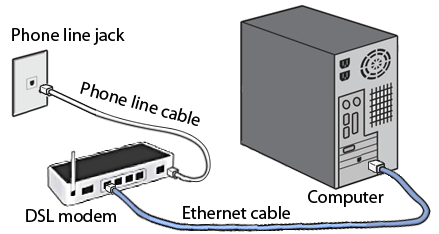Digital Subscriber Line (DSL)
Digital Subscriber Line (DSL) is a family of technologies that provides digital data transmission over the wires of a local telephone network. DSL originally stood for digital subscriber loop. In telecommunications marketing, the term Digital Subscriber Line is widely understood to mean Asymmetric Digital Subscriber Line (ADSL), the most commonly installed technical variety of DSL. DSL service is delivered simultaneously with regular telephone on the same telephone line. This is possible because DSL uses a higher frequency. These frequency bands are subsequently separated by filtering.
The data throughput of consumer DSL services typically ranges from 256 kbit/s to 40 Mbit/s in the direction to the customer (downstream), depending on DSL technology, line conditions, and service-level implementation. In ADSL, the data throughput in the upstream direction, (i.e. in the direction to the service provider) is lower, hence the designation of asymmetric service. In Symmetric Digital Subscriber Line (SDSL) service, the downstream and upstream data rates are equal.
DSL uses a second, higher frequency band (greater than 25 kHz) above the low frequency regime (5 kHz and below) used by voice communications. On the customer premises, a DSL filter is installed on each outlet for telephone handsets to remove the high frequency band, eliminating interference with the operation of the telephone set, and enabling simultaneous use.Voice and data:

